PICK OF THE MONTH
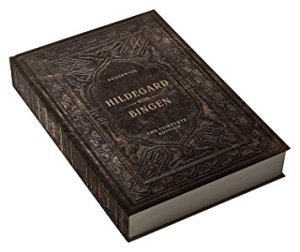 Hildegard von Bingen
Hildegard von Bingen
The Complete Edition (9 discs)
Sony Classical/Deutsche Harmonia Mundi (dist. Naxos)
88725431682
Although the modern fascination with 12th-century abbess, prophetess, theologian, and composer Hildegard of Bingen can be traced back to the Gothic Voices’ exquisite 1984 recording A Feather on the Breath of God, it was the Sequentia ensemble, co-led by the late Barbara Thornton (and later Benjamin Bagby), that then picked up the ball and ran with it. They had actually begun recording Hildegard’s music prior to the Gothic Voices release, and it was Sequentia who pushed through and finally–in 2012–finished a complete recorded edition of Hildegard’s works. Consisting of recordings made between 1982 and 2012, this box brings all of those discs together in a single package, along with extensive historical and performance notes.
If you’re not familiar with it already, this will be music unlike any you’ve heard. It’s plainchant, but not Gregorian chant; the mood is by turns quietly reverent and ecstatic, with voices suddenly soaring off into melisma and then returning to quiet. Instruments are used only sparingly. The centerpiece of this nine-disc set is the two-disc recording of Ordo Virtutem, a musical morality play that remains among the most gripping and beautiful of Hildegard’s works. This set is a must for all library collections.
CLASSICAL
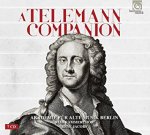 Georg Philipp Telemann
Georg Philipp Telemann
A Telemann Companion (7 discs)
Akademie für Alte Musik Berlin; RIAS Kammerchor / René Jacobs
Harmonia Mundi
HMX 2908781.87
Whenever I listen to the music of Telemann, I’m struck by how much fun it must be to play. Few other composers of his era–especially, I think it must be said, German composers–evinced so much joy in melody and rhythm. 2017 marks the 350th anniversay of Telemann’s death, and I’ve been surprised not to see more in the way of celebratory releases. This seven-disc box is something of a curiosity in that regard: rather than the selective but broadly representative survey that one might expect (a “complete works” box would require scores of discs), it instead offers an opera (Orpheus), a Passion setting, two discs of orchestral music, and one disc of chamber and orchestral music featuring the recorder (all of which were recorded and previously released between 1998 and 2006). The somber beauty of the Brockes-Passion, in particular, makes for a wonderful contrast to the sprightly prettiness of the instrumental works, and this set can be confidently recommended to all libraries that don’t already own the original issues.
 Valentin Silvestrov
Valentin Silvestrov
Hieroglyphen der Nacht
Anja Lechner; Agnès Vesterman
ECM
2389
Ukrainian composer Valentin Silvestrov sees his music as constituting a response to what has come before, or, as he puts it, a series of “codas” to music history. On this album of his compositions for solo and duo cellos, that intention is made explicit in his achingly lovely and lyrical tributes to Schumann and Tchaikovsky, but his starker and more dissonant pieces are referential as well–you’ll hear nods to the aleatory approaches of John Cage and the expressive silences of Morton Feldman, for example. There’s a deep sadness to his work, and an equally deep beauty that becomes more apparent the closer you listen.
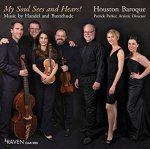 Georg Frideric Handel; Dietrich Buxtehude
Georg Frideric Handel; Dietrich Buxtehude
My Soul Sees and Hears!
Houston Baroque / Patrick Parker
Raven (dist. Albany)
OAR-988
The unifying concept for this assortment of songs, sonatas, and organ pieces by Buxtehude and Handel is the expression of Lutheran faith and the celebration of nature as God’s creation. Arias alternate with sacred organ interludes, and in the center of the program sits Handel’s exceptionally beautiful D major violin sonata. This kind of programming is typical of Houston baroque, an ensemble that has established the practice of “performing music of a certain place and time in three genres: vocal music, instrumental chamber music, and solo organ music.” It works very well here, and this is a truly lovely disc.
 Various Composers
Various Composers
Meditations and Tributes
Matthew Nelson
Soundset
SR 1087
Matthew Nelson is a clarinetist of astounding range and virtuosity, with a tone that is never less than burnished and lovely no matter how spiky and challenging the music he may be playing. And on this album he plays plenty of spiky and challenging music (as well as plenty of humorous and even lyrical music). It’s a collection of late-20th- and early-21st-century works for unaccompanied clarinet, and as you might expect the styles and moods vary widely. Among the highlights are Franco Donatoni’s Clair suite, on which Nelson manages to sound as if he’s playing multiple instruments at once, and Krzysztof Penderecki’s Prelude. For all libraries supporting wind or contemporary-music programs.
 Carl Philipp Emanuel Bach
Carl Philipp Emanuel Bach
Tangere
Alexei Lubimov
ECM
2112
Rick’s Pick
 Carl Philipp Emanuel Bach
Carl Philipp Emanuel Bach
Sonatas for Violin and Fortepiano (reissue)
Amandine Beyer; Edna Stern
Alpha (dist. Naxos)
329
These two releases both feature chamber works of C.P.E. Bach played on period instruments. The selection of keyboard works performed by Alexei Lubimov are of interest partly because of the music itself–an assortment of fantasies, sonatas, rondos, and “solfeggios” that amply display Bach’s command of the keyboard–and partly because of the instrument he uses. It’s a tangent piano, one of only a handful still in existence, and its sound is (as one might expect) somewhere between the thin jangle of a harpsichord and the rounder and more robust attack of a fortepiano. In fact, at times, especially on the simpler pieces, it sounds for all the world like a hammered dulcimer. Not only is Lubimov’s playing wonderful, but the opportunity to hear this music played on such a unique instrument is an important one. The second disc of C.P.E. Bach chamber music under consideration here is a delightful set of sonatas for violin and keyboard, played by violinist Amandine Beyer and fortepianist Edna Stern. One of the wonderful things about C.P.E. Bach’s music is his unique musical personality, one that is much more willful and iconoclastic than his last name would lead the casual listener to expect. Beyer and Stern do a wonderful job of bringing out both the elegance and the subtle strangeness of this music, creating a marvelous listening experience.
 François Devienne
François Devienne
Flute Concertos, Vol. 3
Patrick Gallois; Swedish Chamber Orchestra
Naxos
8.573465
Rick’s Pick
I have recommended every volume in this important series so far, and the third and final installment is just as enjoyable as the first two. Historically speaking, this last set of four flute concertos is one of the most interesting of the three, as the last two concertos in the series show the effects of François Devienne’s failing health on his compositional ability; he would die (aged 44) before the last few of these pieces were published. Nevertheless, even at his weakest, Devienne exhibited both a mastery of classical forms and a desire to push their boundaries. Flutist Patrick Gallois is a powerful advocate for these relatively little-known works, and his use of a wooden Boehm-system flute brings an additional dimension of tonal historicity to the otherwise modern-instrument performances. Highly recommended to all libraries.
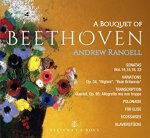 Ludwig Van Beethoven
Ludwig Van Beethoven
A Bouquet of Beethoven (2 discs)
Andrew Rangell
Steinway & Sons
30080
It’s always controversial to claim that any pianist is the “greatest living Beethoven performer,” but honestly, if you were to ask just about anyone to list the top five Beethoven players I’d bet you big money that Andrew Rangell would be in the top three of virtually everyone’s list. For this two-disc recital, he selects a program of works both familiar (Für Elise, the “Moonlight” sonata, etc.) and relatively obscure in order to create a “bouquet”-like selection of pieces. He also includes his own transcription of one movement from a string quartet and original improvisations on Beethoven’s variations on a theme from Righini. This is a masterful work of musical exegesis, the kind that very few pianists have the capacity to offer. Highly recommended to all libraries.
 John Turner
John Turner
Christmas Card Carols
Intimate Voices / Christopher Stokes
Divine Art
dda 25161
Rick’s Pick
John Turner is best known as a virtuoso recorder player, but he is also a composer, and for the past several decades has made it a practice to compose a Christmas carol each year and include it in the holiday cards he sends to friends and family. All of these are collected here, and performed by the Intimate Voices ensemble. The works are mostly a cappella, and consist of both fully original compositions and new settings of familiar lyrics like “Away in a Manger” and “I Sing of a Maiden.” Turner’s writing is tonal and accessible, but often nudges the boundaries of traditional harmony in gently intriguing ways. If you’re in the market for Christmas music and want something that departs delightfully from the norm, this album would make an excellent choice.
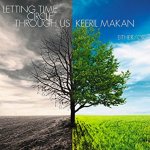 Keeril Makan
Keeril Makan
Letting Time Circle Through Us
Either/Or
New World (dist. Albany)
80791-2
Letting Time Circle Through Us is an aptly-titled work scored for a mixed sextet of piano, guitar, violin, cello, cimbalom, and percussion. As the title suggests, it’s something of a “process” piece, one that uses cyclic repetition of relatively static harmonic materials to create a constantly-shifting array of sounds. That description might lead you to expect something like a chamber-music version of wind chimes, but in fact Makan organizes the music in a compelling way, interspersing sections of widely differing chracters to achieve something that sounds a bit like a sonic quilt. It’s unusual for music so restricted in harmonic content to achieve such a high level of emotional interest. Highly recommended to libraries.
JAZZ
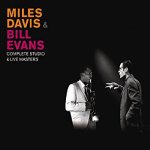 Miles Davis & Bill Evans
Miles Davis & Bill Evans
Complete Studio & Live Masters (3 discs)
One (dist. MVD)
59807
Rick’s Pick
I’m kind of shocked that no one has thought to put this collection together before. Miles Davis and Bill Evans, two of the architects of the “cool” jazz movement that followed in the turbulent wake of the bebop era, recorded three complete albums together (Kind of Blue, At Newport, and Jazz at the Plaza), and participated together on several other albums and radio broadcasts. This three-disc set compiles all of their known work together into a single package, along with very good historical and analytical liner notes, making a release that should find a home in every library’s jazz collection. Davis and Evans had a unique chemistry, and made some of the most electrifying music of the mid-20th century.
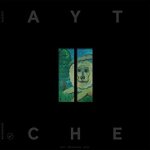 Joseph Shabason
Joseph Shabason
Aytche
Western Vinyl
24910
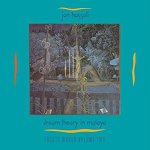 Jon Hassell
Jon Hassell
Dream Theory in Malaya: Fourth World., Vol. 2 (reissue)
Glitterbeat
52
Neither of these albums fit very well in the Jazz section, but they fit well together and “jazz” is the closest I can come to assigning the Joseph Shabason album a category, so there you go. Shabason is a saxophonist, and his solo album draws on jazz instrumentation to create music that neither swings nor bops, but instead alternately shimmers, grates, floats, shrieks, and hovers. Most of the time it’s exceptionally beautiful without offering anything immediately recognizable as either melody or rhythm; at other times it takes you by surprise with nasty abrasiveness. The Jon Hassell album is a reissue (with one bonus track) of one of the landmark releases from Brian Eno’s Editions EG label during its heyday in the late 1970s and early ’80s. It finds Hassell using a combination of field recordings and electronic effects to create alien soundscapes for his radically mutated trumpet sounds; the music is as strange as anything you’ll ever hear, and this one of those albums that kind of divides the world into two kinds of people: those who love it, and those who think that in order to love it you’d have to be mentally ill. For what it’s worth, I’m one of the former.
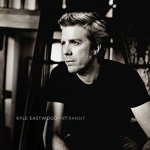 Kyle Eastwood
Kyle Eastwood
In Transit
Jazz Village (dist. Harmonia Mundi)
JV 570146
Rick’s Pick
One of the best straight-ahead jazz albums I’ve heard all year is the eighth album by bassist and composer Kyle Eastwood. Leading a quintet that also features saxophonist Brandon Allen, trumpeter Quentin Collins, pianist Andrew McCormack, and drummer Chris Higginbottom (with special guest sax player Stefano di Battista on several cuts), Eastwood delivers a rock-solid set of cool mid-tempo numbers (“Movin’,” “Night Flight”), high-energy bop (“Rush Hour”), and a lush ballad (“Cinema Paradiso (Love Theme)”). There’s also a very impressive rendition of Thelonious Monk’s “We See,” one that takes the tune at two very different tempos, maintaining a surprising elegance and delicacy throughout–not the approach one usually hears with interpretations of Monk tunes. This is a wonderful album that should find a home in all library collections.
 Gary Husband
Gary Husband
A Meeting of Spirits
Edition (dist. Harmonia Mundi)
EDN10998
On this album, pianist Gary Husband interprets and responds to compositions by jazz/fusion guitar great John McLaughlin. The pieces are all for solo piano, and Husband occasionally uses his instrument percussively as well as melodically (there seems to be at least a little bit of multitracking involved). This is something of a companion album to a similar tribute he made years ago to another fusion guitarist, Allan Holdsworth. Strangely, this one was recorded more than ten years ago and is just being released now. It shows Husband to be a player of similar virtuosity to McLaughlin, with a similarly discursive, questing solo style. Maybe not essential for all libraries, this one would nevertheless make a strong addition to comprehensive jazz collections.
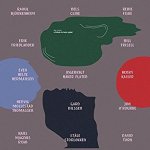 Various Artists
Various Artists
Sky Music: A Tribute to Terje Rypdal
Rune Grammofon
RCD 2194
And speaking of tributes to out-of-the-box guitar figures, Sky Music celebrates the music of Terje Rypdal, a staple of the ECM Records lineup for many years, and a singular jazz stylist. This album was released as Rypdal turned 70, and it featured a large lineup of guitarists and other supporting players. Most are fellow Scandinavians, but the album opens with Bill Frisell’s beautiful and contemplative take on “Ørnen,” and there are also appearances by Henry Kaiser, Nelson Cline, and David Torn. Much of the music is intense and challenging, but there are soaringly beautiful moments of lyricism as well. A must for any library supporting jazz guitar pedagogy.
 Rez Abbasi/Invocation
Rez Abbasi/Invocation
Unfiltered Universe
Whirlwind (dist. Redeye)
WR4713
And, while we’re on the topic of genre-envelope-pushing jazz guitarists, let’s consider the third album in Rez Abbasi’s trilogy (with his quintet Invocation) of releases exploring a fusion of jazz and South Asian music. The group’s first album in this series focused on North Indian Hindustani music, the second on the qawwali traditions of Pakistan, and this one explores the Carnatic music of South India. However, the casual listener may be forgiven for not hearing much of an explicitly Indian character in this music–on the surface, it sounds mainly like exploratory jazz, in which complex, sideways melodies and jagged rhythms alternate with moments of lovely quietude. There’s lots of tightly-composed ensemble work as well as plenty of space for soloing. It’s all both challenging and beautiful, and of course intriguing from a multicultural standpoint.
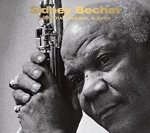 Sidney Bechet
Sidney Bechet
Essential Original Albums (3 discs)
Masters of Music (dist. MVD)
545508
Rick’s Pick
Soprano saxophonist/clarinetist Sidney Bechet was one of the pioneering figures in traditional jazz, and unlike many of his contemporaries he had a long recording career. This three-disc set brings together several of his earliest albums along with material from the last decade of his life–a very nice overview of the career of one of the most exciting instrumentalists in jazz history. Other featured players include Buck Clayton, Martial Solal, Willie “The Lion” Smith, and Sarah Vaughan, making this collection not only a blast to listen to but also a valuable historical document. The liner notes are good too. Highly recommended to all jazz collections.
FOLK/COUNTRY
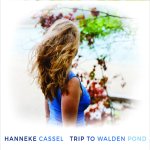 Hanneke Cassel
Hanneke Cassel
Trip to Walden Pond
Self-released
HJC2017
Fiddler Hanneke Cassel performs, composes, and teaches in the Boston area, and plays in a style that draws deeply on Scottish and Cape Breton influences. But the tunes she writes and arranges go way beyond the stomping dancehall and lilting strathspey sounds that one might normally associate with those styles–she crafts complex and unusual arrangements that sometimes go off in unusual directions both melodically and harmonically. Cassel is not only a technical virtuoso, but also an impressive musical thinker who has come up with new ways of thinking about her chosen fiddling traditions. This is a deeply lovely album.
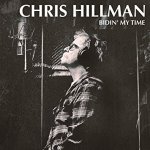 Chris Hillman
Chris Hillman
Bidin’ My Time
Rounder
1166100249
Rick’s Pick
Holy cow. First of all, if you’re not familiar with the name Chis Hillman, it’s important to know that as a founding member of the Byrds and the Flying Burrito Borthers he is one of the primary architects of American folk-rock. Second of all, this album was produced by Tom Petty, making it one of the last projects Petty completed before his sudden and untimely death a few weeks ago. Third: even at 72 years old, Hillman still has a voice of delicate loveliness (maybe just a little more delicate than it used to be), and he still writes a mean modern-country ballad, and he’s able to get A-list studio musicians in to help him create songs of transcendent beauty. (Check out “Here She Comes Again,” for example: it features Roger McGuinn, Tom Petty, Benmont Tench, and Herb Pedersen–and that’s just one song.) And fourth: he can cover Gene Clark and Sonny Curtis like no one’s business. Highly recommended to all libraries.
 Donna Ulisse
Donna Ulisse
Breakin’ Easy
Mountain Home Music Company/Crossroads Entertainment
MH16932
While this album will probably be shelved in the bluegrass section (and it’s true that there’s plenty of banjo and mandolin in the mix), the music of singer/songwriter Donna Ulisse covers a much broader territory than that. Her voice and her singing style are more modern-country than high-lonesome, and her songs tend more towards the midtempo than the headlong. Her latest album is produced, beautifully, by gospel-bluegrass superstar Doyle Lawson and features a rich and crystalline recorded sound, one that sets off her voice like a jewel in a velvet box. Any library that collects acoustic, bluegrass, or country music should definitely take notice of this one.
ROCK/POP
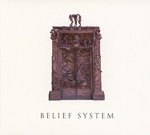 Special Request
Special Request
Belief System (2 discs)
Houndstooth
HTH076CD
Rick’s Pick
For this monumental and richly varied collection of tracks, Paul Woolford (who records under the name Special Request) dug through his own tape vaults going back to 1993, pulling out sung and spoken vocal snippets, beat loops, strange found sounds (like a contact-mic recording of an iceberg breaking), and other sonic miscellanea. He put them together into this crazy-quilt of tracks: soothing ambient excursions, jacking techno ravers, gently skittering jungle tracks, and other offerings that are pretty much uncategorizable. That this album should be so wildly varied in tone and texture and so consistently compelling is a powerful testament to Woolford’s talent. Highly recommended.
 Submerse
Submerse
Are You Anywhere?
Project: Mooncircle
PMC 162
The guy who goes by the name Submerse was born in the UK but is now based in Tokyo, where he creates music that fully lives up to his stage name. On his third full-length release, the music feels as if it’s being made underwater: though the beats are steady and firm, the overall feeling is languid and dreamy, with a subtle tension to it–almost as if the music wants to move faster but just can’t. You’ll hear textures and keyboard sounds that remind you of early-90s Quiet Storm R&B, the occasional incursion of winningly cheesy vocoder, and lots of 808 cowbell. Like just about everything from the Project:Mooncircle label, Submerse’s music offers a smooth and pleasing surface with lots of sly detail and complexity lurking beneath it.
 Frore & Shane Morris
Frore & Shane Morris
Eclipse
Spotted Peccary Music
SPM-9085
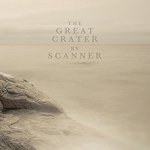 Scanner
Scanner
The Great Crater
Glacial Movements
GM030
In the world of ambient music, there are multiple subgenres. The two largest of these categories might be called “friendly” and “grumpy.” Friendly ambient music is soothing and lulling, often even soporific. Grumpy ambient music is quiet but unsettling, usually dark and sometimes actually scary. Paul Casper (a.k.a. Frore) and Shane Morris have collaborated to produce an album that kind of straddles those two categories: unlike most ambient music, Eclipse intermittently features actual beats, but mostly the textures are ethereal and spacious and the grooves float and drift rather than drive or pound. The mood is mostly darkish, but not at all doom-laden. The secret of effective ambient music is subtle complexity, and these two have achieved that nicely with this album. Robin Rimbaud (a.k.a. Scanner), however, is dealing in subtle images of environmental catastrophe, and accordingly his take on the ambient genre is much grumpier. His latest project is inspired by troubling developments in the Arctic ice fields, and its mood varies from aridly frigid to spaciously pessimistic. That may not sound like a recommendation, but in fact the music on The Great Crater is not only fascinating but also quite beautiful. It’s just not going to help you sleep better. Both albums are recommended to libraries with electronic music collections.
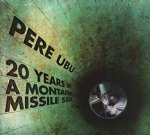 Pere Ubu
Pere Ubu
20 Years in a Montana Missile Silo
Cherry Red (dist. MVD)
CDBRED708
Pere Ubu frontman David Thomas used to insist that there was nothing “experimental” about his band’s music—he insisted that it was simply rock’n’roll, and if it sounded different fromthe music of other bands, that was because those other bands were doing it wrong. I’ve spent more than 30 years trying to figure out when Thomas is and isn’t joking, but I can tell you this: Pere Ubu’s new album rocks hard. It rocks hard even when Thomas lapses into his patented penguin-voice sprechgesang, even when Robert Wheeler’s EML synthesizer is squealing and sighing at apparent cross purposes to the chord progression, and even when the songs are about… well, dang, I can’t really tell what most of the songs are about. No matter. Thomas characterizes this one as “the James Gang teaming up with Tangerine Dream,” and I guess that will do. Although at under 34 minutes in length, it rocks far too briefly for a full-priced album, I nevertheless recommend it to all libraries that collect… er… rock’n’roll.
WORLD/ETHNIC
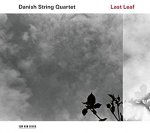 Danish String Quartet
Danish String Quartet
Last Leaf
ECM
2550
Rick’s Pick
The Danish String Quartet is one of those hot young ensembles right now–you know, the ones who play the standard repertoire and cutting-edge modernist pieces with equal passion and flair, the ones who delve into nonclassical traditions to create accessible but aesthetically complex pieces of simultaneously ancient and modern art, the ones with hip haircuts. For their second album on the ECM New Series, the DSQ interprets Scandinavian folk tunes–the fiddle tunes one would expect, but also traditional hymns, boat songs, medieval ballads, and Christmas music. The group’s instrumental forces are expanded here to include harmonium, piano, glockenspiel and string bass, though mostly what you’ll hear is a string quartet. This is music of exceptional grace and beauty, the arrangements sometimes simple and sometimes forbiddingly complex, the music veering between dark sadness and joyful exuberance. Highly recommended to all libraries.
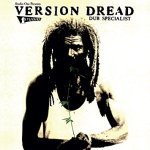 Various Artists
Various Artists
Version Dread (reissue)
Studio One (dist. Redeye)
CD-SOR-014
Dub–the practice of radically reworking songs in such a way that vocals and instruments float in and out of the mix, creating a mystical, floating vibe–has its roots in the early-1970s reggae scene and went on to build the foundation of modern remix culture. Very often, dub versions were released as B-sides of singles; the A-side would be the vocal, and the B-side the version. This outstanding collection of classic B-side dubs comes courtesy of the Studio One vaults, and features versions of songs by the Classics (later known as the Wailing Souls), Burning Spear, the Royals, and many others. There are tons of generic dub compilations out there, some of them cheaper than this one, but this is among the two or three best I’ve ever heard–and it’s now being reissued at mid price. For all libraries.
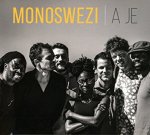 Monoswezi
Monoswezi
A Je
Riverboat (dist. Redeye)
TUGCD1103
Rick’s Pick
Back in 2013, I designated Monoswezi’s The Village Pick of the Month, and called it a “must-have for all world music collections.” Their latest is just as good, a global-fusion album of the very best kind. The group’s members hail from Mozambique, Norway, Sweden, and Zimbabwe, and while elements from all of those countries (and others) can be heard at various times, it’s African rhythms that form the core of the band’s sound. Malian musician Sidiki Camara is a guest performer on this album, bringing calabash percussion and 8-stringed lute into the mix. As before, singer Hope Masike is one of the central features of the program, but her voice (along with that of Calu Tsemane) is almost treated like an instrument rather than a solo element. Anyway, it’s all wonderful. For all libraries.
 Saz’iso
Saz’iso
At Least Wave Your Handkerchief at Me: The Joys and Sorrows of Southern Albanian Song
Glitterbeat (dist. Forced Exposure)
GB 053CD
Saze, the traditional music of Southern Albania, is characterized by multiple melodic lines that interact simultaneously–originally sung, and later played by clarinet and violin. This is a repertoire that has not been widely recorded, and the Saz’iso ensemble formed for the specific purpose of remedying that lack. At Least Wave Your Handkerchief at Me was recorded live in the studio, with no overdubbing, and features elements that will be familiar to fans of Balkan music (that buzzing-mosquito clarinet sound, the astringent and open-throated singing style) but others that are unique to this music. For all ethnomusicology collections.
 Various Artists
Various Artists
Havana Meets Kingston
17 North Parade/VP
VP4219
Rick’s Pick
I approached this album with a little bit of apprehension. While I had no doubt that Jamaica and Cuba–two of the most important music-producing countries in the Caribbean–had exercised some degree of mutual influence and could imagine any number of ways that son, calypso, reggae, and rumba could be combined, the subtitle “A Journey to Unite the Music of Cuba & Jamaica” sounded a bit forced to me. But the result won me over: when Jamaican musicians like Sly Dunbar, Ernest Ranglin, Bongo Herman, and Robbie Shakespeare flew to Havana to jam with their Cuban confrères, the result was rhythmic magic. And inviting along vocalists like Cornel Cambpell, Prince Alla and Brenda Navarrete was a move of sheer genius. Highly recommended.
 The Frightnrs
The Frightnrs
More to Say Versions (vinyl/digital only)
Daptone (dist. Redeye)
There are reggae groups who try to update their sound to make it more palatable to a younger generation raised on digital production and Michael Bay movie sound effects. Then there are the ones who go in exactly the opposite direction, embracing the analog-tape-and-Echoplex sound of the Jamaican studios of the 1970s—or even earlier. The Frightnrs are in the latter camp, making recordings that sound like they came out of Studio One in the early days: splashy drums, fast-decaying echo, clucky rock-steady guitars. Dismiss it as empty formalism if you want, and I’ll push back only on the “empty” part: these songs kill. And they continue to do so even on this, a collection of dub versions based on the band’s 2016 LP Nothing More to Say. Even with only fleeting scraps of vocal left in the mix, the songs will still grab your heart and move your waist. Highly recommended.
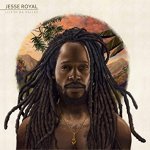 Jesse Royal
Jesse Royal
Lily of da Valley
Easy Star
ES-1063
Rick’s Pick
Which bring us to this album and a possibly uncomfortable question: what’s more authentic, a bunch of white guys from New York playing reggae that sounds like it could have been written and sung in 1972, or a black guy from Jamaica singing up-to-the-minute, glossily-produced modern roots reggae? If you’ve been reading CD HotList for a while, then you know that my answer is a resounding “who cares?”. What matter to me are the grooves, the melodies, and the lyrics. All of which are absolutely slamming on this debut album from Jesse Royal. I’d have been excited about it just because roots reggae has been hard to find in dancehall-besotted Jamaica for years, but what makes it even more exciting is that the album is absolutely brilliant. The smooth surfaces can’t hide the depth and solidity of the music, and the hip-hop derived beats can’t conceal Royal’s bone-deep roots. Every library needs to pick this one up and to keep an eye out for his future releases.